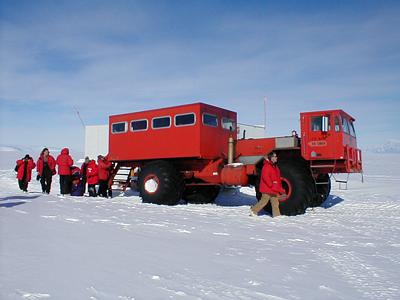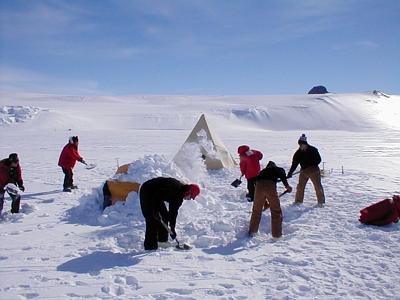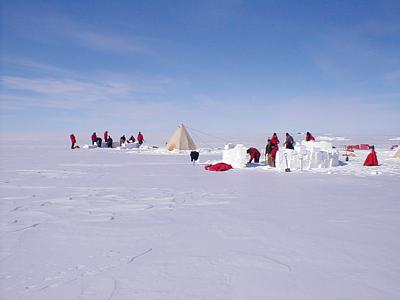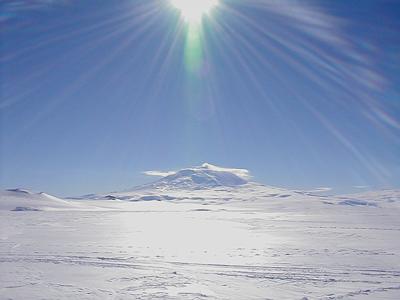14 November, 2000
Snow School
Anyone who needs to travel away from a station or winter over at a station must complete a survival training course. It is officially know as Snowcraft I but it is often referred to as Happy Camper School. Today was my day so I packed up my extreme cold weather gear and headed out at 9am. It was a beautiful morning.
I joined fourteen other parcticipants and the two instructors in a large vehicle called a Delta. We were taken past New Zealand's Scott Base out onto the ice shelf. At a small hut called a Jamesway we received some instruction in survival techniques. Then we were off in the Delta for a short distance to the place where we would spend the night.
We learned how to put up the two basic kinds of tents used in Antarctica. Snow blocks were cut to shelter the tents and to construct a kitchen area. We also learned how to make a few types of snow shelters. To construct a quinzhee we made a huge pile out of out gear bags and covered it with three to four feet of snow, which we patted down. After letting it set, we extracted the gear leaving a hollow mound suitable to sleep in.
At that point the instructors left us. We were to continue setting up camp, cook dinner, and spend the night before their return in the morning. It was a delightful afternoon and evening. The sky was blue and there wasn't a breath of wind. See tomorrow (11-15) for the rest of the story.

We are loading the Delta with our sleep kits. These contain a down sleeping bag, a liner, and two pads.

This shows the construction of a quinzhee in progress. Though we had several tents, these shelters were the most popular among the group.

Saws were used to cut blocks of snow. The blocks were formed into walls to provide wind protection for the smaller mountaineering tents. The larger, yellow Scott tents are the same style as used by polar explorers in the early 1900s.

>From our camp on the ice shelf we could look up at Mt. Erebus. Since this location is near the edge of the shelf, the ice is only about 50 meters (164 ft) thick. It floats on water that is about 200 meters (656 ft) deep at this location.
Contact the TEA in the field at
.
If you cannot connect through your browser, copy the
TEA's e-mail address in the "To:" line of
your favorite e-mail package.
|
